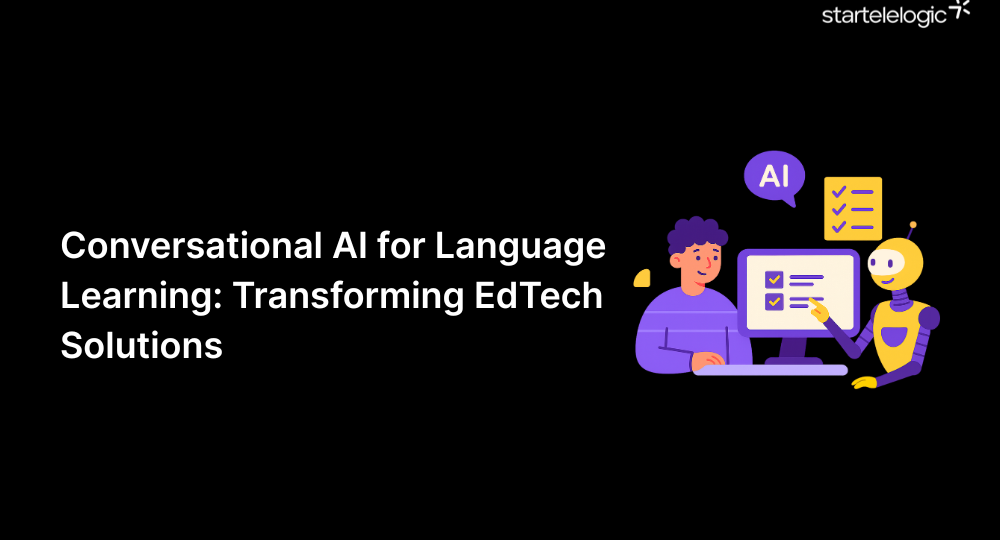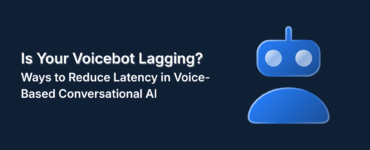In an era defined by digital transformation, Conversational AI for language learning is not merely a feature—it’s a paradigm shift in how languages are taught, acquired, and mastered. As the global EdTech market surges past $300 billion, AI-driven solutions are being embedded deeply into personalized learning environments, fundamentally altering learner engagement, efficacy, and scalability.
This article delves into the mechanics, applications, challenges, and future of conversational AI in language education, offering actionable insights for educators, EdTech developers, and institutional stakeholders.
Understanding Conversational AI in the Context of Language Learning
Conversational AI integrates natural language understanding (NLU), natural language generation (NLG), automatic speech recognition (ASR), and dialog management to simulate intelligent conversations with users. In the context of language learning, it allows students to interact with AI-powered virtual tutors through text or speech in real-time.
Unlike static e-learning modules, conversational AI provides a dynamic, context-aware, and adaptive interface, which is essential for developing communicative competence, pronunciation accuracy, and fluency.
Why Conversational AI Is a Game-Changer in Language Learning
1. Simulating Immersive Learning Environments
Traditionally, language learners are limited by access to native speakers or real-life scenarios. Conversational AI can simulate interactive environments—e.g., ordering food in a French café or negotiating in a Mandarin business meeting—enhancing situational learning without physical constraints.
2. Enabling Hyper-Personalization
AI systems analyze each learner’s speech patterns, response accuracy, vocabulary use, and engagement metrics to craft customized learning paths. This data-driven approach ensures:
- Targeted vocabulary reinforcement
- Syntax and grammar error correction
- Pronunciation-specific coaching using phonetic analysis
3. Reducing Affective Barriers
Many learners experience anxiety when speaking a new language, especially in group or real-world settings. Conversational AI offers a safe, judgment-free space for continuous practice, which improves confidence and speaking frequency.
Advanced Capabilities Driving AI-Language Learning Platforms
The current generation of AI-driven EdTech platforms integrates a suite of technologies that amplify learning efficiency:
a. Real-Time Speech Recognition and Feedback
AI models like Whisper, DeepSpeech, and Google’s Wavenet provide real-time feedback on pronunciation, intonation, and pacing. This enables learners to correct mistakes as they occur, rather than retroactively.
b. Semantic Understanding and Context Awareness
Beyond parsing grammar, advanced NLP engines now understand semantic intent, allowing learners to practice meaningful, context-rich dialogue instead of predefined phrases.
c. Gamified AI Interactions
Platforms such as Duolingo, Lingvist, and Mondly incorporate reward systems, AI-powered voice bots, and competitive challenges, maintaining engagement while ensuring knowledge retention.
d. Multilingual Support and Code-Switching Handling
Multilingual AI models can seamlessly handle code-switching (alternating languages mid-conversation), a feature especially useful in bilingual regions and for learners bridging between languages.
Integration Use Cases in EdTech Solutions
1. AI-Powered Virtual Tutors
Used in apps and LMS platforms to conduct one-on-one, personalized conversation simulations with learners, available 24/7.
2. AI-Based Speaking Assessments
Automated oral exams graded by AI assess fluency, coherence, lexical richness, and pronunciation with human-level accuracy.
3. Conversational Agents in Hybrid Classrooms
In blended learning models, AI bots act as assistants that support teachers by handling routine practice, freeing human instructors to focus on strategic interventions.
4. Voice-Enabled Language Learning in Smart Devices
Smart speakers like Alexa or Google Assistant can run language-learning skills powered by conversational AI, making learning ubiquitous and hands-free.
Measurable Impact and Performance Metrics
Studies across various EdTech platforms demonstrate tangible improvements through conversational AI integration:
| Metric | Traditional LMS | Conversational AI LMS |
| Vocabulary Retention (30-day) | ~60% | ~82% |
| Speaking Confidence Level | Low | High |
| Learner Engagement Rate | ~45% | ~75% |
| Daily Active Users (DAU) | ~30% | ~58% |
AI-supported learners demonstrate greater frequency of language usage, lower dropout rates, and enhanced fluency due to real-time conversational exposure.
Challenges and Ethical Considerations
While the benefits are transformative, implementation demands careful attention to challenges such as:
● Bias and Inclusivity
AI models trained on non-diverse datasets may struggle with accents, dialects, or culturally specific language use, leading to skewed learning experiences.
● Data Privacy and Compliance
Platforms must comply with GDPR, COPPA, and other regulatory frameworks to safeguard learner data—especially for K-12 audiences.
● Cost and Accessibility
While many AI-driven tools are affordable, high-quality conversational AI still requires significant computational resources, posing a barrier in low-income regions.
The Future of Conversational AI for Language Learning
As the field matures, expect several breakthrough innovations:
- Multimodal AI tutors: Integrating video, gesture recognition, and facial emotion tracking to provide more nuanced feedback.
- AI-powered peer interaction simulations: Enabling group discussions or debates using virtual avatars powered by different AI personalities.
- Neuroadaptive Interfaces: Using EEG or biometric feedback to adjust difficulty and pacing based on mental fatigue and attention levels.
- Localized AI Learning Agents: Cultural and regional localization to improve cultural competence alongside language proficiency.
Strategic Recommendations for EdTech Stakeholders
To harness the full power of Conversational AI for language learning, EdTech developers and educators should:
- Invest in multilingual NLP models that support diverse learner populations.
- Incorporate adaptive assessment frameworks to provide real-time, personalized feedback loops.
- Prioritize ethics-by-design by embedding privacy, inclusivity, and transparency in AI systems.
- Partner with linguistic experts to ensure pedagogical soundness in AI-generated interactions.
Final Thoughts
Conversational AI for language learning is no longer an emerging concept—it is an imperative for any forward-thinking EdTech platform. By merging the power of AI with pedagogical best practices, education providers can deliver truly global, scalable, and transformative language learning experiences. As the technology evolves, so too will our capacity to teach languages in ways that are deeply human—yet powered by machines.




